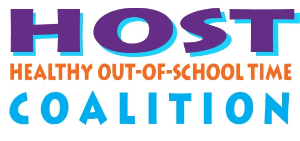HOST HEPA Roundup, June 24, 2016

The latest in our regular roundups of healthy eating and physical activity news from HOST members and others.
Success Stories
- Action for Healthy Kids profiles a first grade teacher and co-director of the afterschool program in Alabama who used a $1,000 Action for Healthy Kids grant, funded by CSX Transportation, to implement a morning walking program. The 103 students who enrolled (more than 25 percent of the school population) have logged over 3,000 miles.
- High school students from across the country served U.S. senators this month during the Cooking up Change competition, supported by the Kids' Safe and Healthful Foods Project (a collaboration between the Robert Wood Johnson Foundation and the Pew Charitable Trusts). The event challenged the students to create delicious meals that meet the cost and nutritional requirements of school lunches, and gave them an opportunity to contribute to the discussion about national school meal policy.
Tips and Ideas
- Alliance for a Healthier Generation offers A Summer Reading List for School Leaders on healthy eating and physical activity, as well as 5 Activities for an Epic 4th of July (healthy, of course).
- The United Way looks at the connection between summer slide and hunger.
- Salud America's Amanda Merck has published an article in The Rivard Report showing ways to help create opportunities for physical activity in San Antonio.
- The American Heart Association explains the Suggested Servings from Each Food Group.
- It's Time Texas explores the benefits of working out alone, versus with a friend.
- The National AfterSchool Association tells us about Scholastic 3-D Archery (S3DA), which provides 3-D and indoor archery opportunities for youth in afterschool settings, in addition to archery-affiliated clubs and businesses in their communities.
Research
- The Food Research and Action Center (FRAC) released its annual Hunger Doesn’t Take a Vacation report, which found that after three years of significant growth, national participation in the Summer Nutrition Programs plateaued last year. During July 2015, the programs served nearly 3.2 million low-income children across the country, an increase of 11,000 from July 2014.
- FRAC also reports on a new Center on Budget and Policy Priorities study that found higher Supplemental Nutrition Assistance Program benefits will improve the health and well-being of low-income Americans--but inadequate benefits limit the program’s ability to do more to improve food security, health, and well-being.
